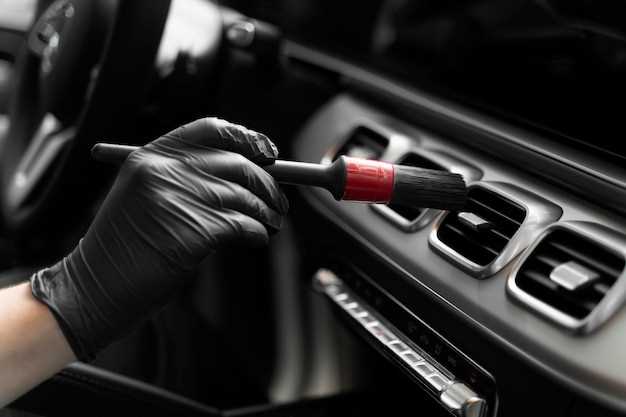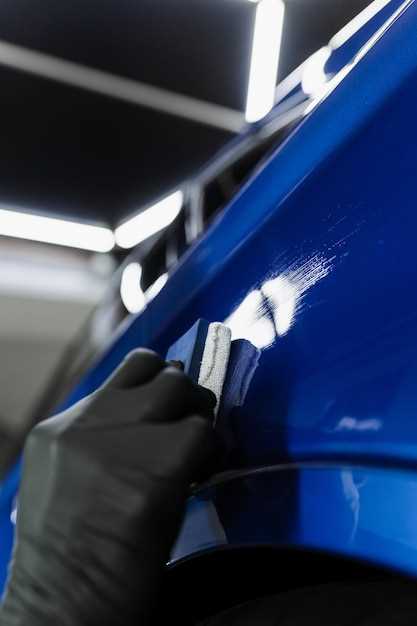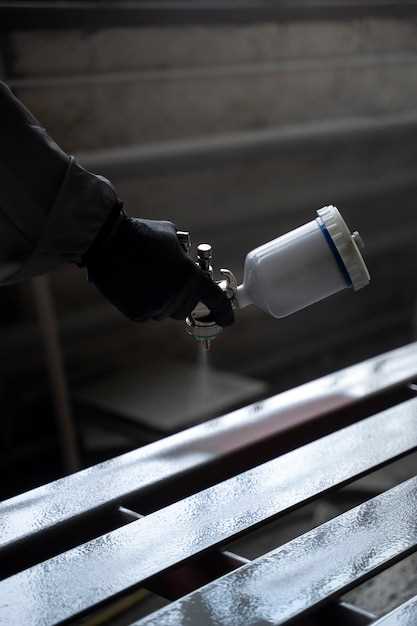
In the automotive world, the quest for the ultimate paint protection has led to innovative solutions that go beyond traditional waxes and sealants. Ceramic coatings have emerged as a leading choice for car enthusiasts and owners looking to preserve the beauty and integrity of their vehicle’s exterior. These advanced products offer a unique blend of durability, shine, and ease of maintenance, effectively safeguarding against environmental contaminants and UV damage.
When choosing a ceramic coating, several factors come into play, such as the level of protection, application process, and long-term performance. With numerous options available on the market, it is essential to evaluate the best ceramic coatings that deliver exceptional results while catering to individual needs and preferences. This article delves into the top ceramic coatings designed specifically for premium paint protection, highlighting their key features, benefits, and suitability for various vehicles.
From DIY enthusiasts to professional detailers, understanding the advantages of each ceramic coating can significantly impact the overall look and longevity of a vehicle’s finish. With unmatched hydrophobic properties and scratch resistance, the right ceramic coating will not only enhance the aesthetic appeal but also provide peace of mind against the elements. Join us as we explore some of the leading ceramic coatings that stand out in the world of premium paint protection.
Key Attributes to Look for in Ceramic Coatings

When selecting a ceramic coating for paint protection, several critical attributes should guide your decision. Understanding these features ensures you invest in a product that effectively preserves your vehicle’s exterior.
First, consider the durability of the coating. High-quality ceramic coatings often last between two to five years, depending on their formulation and application method. Look for products with robust resistance to environmental factors, including UV rays, acid rain, and chemical stains.
Next, evaluate the hardness rating. A higher hardness level, measured on the Mohs scale, indicates a stronger surface that can withstand scratches and abrasions. Aim for coatings rated at least 9H, as these provide superior protection against everyday wear.
Hydrophobic properties are another essential feature. High-performing coatings create a water-repellent surface to facilitate easier cleaning and prevent water spots. Ensure the product is designed to offer excellent hydrophobic qualities that repel dirt and contaminants.
Application ease is also vital. Some ceramic coatings require professional installation, while others are user-friendly for DIY application. Choose a product that fits your level of expertise and comfort with the application process.
Additionally, assess the versatility of the coating. The best ceramic coatings can be applied to various surfaces, including glass, plastic, and wheels. A multifunctional product allows for comprehensive protection across your vehicle.
Finally, review user testimonials and independent reviews. Genuine feedback provides insight into real-world performance, longevity, and ease of application, helping you make an informed choice.
Step-by-Step Application Guide for Optimal Results

To achieve the best protection and finish when applying ceramic coatings, follow this comprehensive step-by-step guide.
Step 1: Gather Your Supplies
Before starting, ensure you have all necessary materials. You’ll need a high-quality ceramic coating, a polished surface, microfiber towels, isopropyl alcohol (IPA), clay bar, and applicator pads.
Step 2: Clean the Surface Thoroughly
Start with a detailed wash of your vehicle using a pH-neutral car shampoo. Remove any dirt, grime, or contaminants using a wash mitt and rinse completely. After washing, dry the surface with microfiber towels to avoid water spots.
Step 3: Decontaminate the Paint
To ensure a smooth surface, use a clay bar to remove embedded contaminants. Lubricate the paint with detailing spray and gently glide the clay bar over the surface. Wipe away any residue with a clean microfiber towel.
Step 4: Polish the Paint
If necessary, polish the surface to eliminate scratches and swirl marks. Use a dual-action polisher with the appropriate polishing pad and compound. After polishing, wipe the surface clean to remove any polishing residue.
Step 5: Prepare the Surface with IPA
Mix a solution of 50% isopropyl alcohol and 50% water to remove oils and residues from previous steps. Wipe the entire surface using a clean microfiber towel to ensure maximum adhesion of the ceramic coating.
Step 6: Apply the Ceramic Coating
Using an applicator pad, place a few drops of ceramic coating on the pad. Apply the coating in overlapping sections, working in a crosshatch pattern. This technique ensures even coverage. Be mindful to avoid applying in direct sunlight or on hot surfaces.
Step 7: Allow to Flash
After applying, allow the product to “flash” for the manufacturer-recommended time. This is when the coating begins to cure. Keep the surface still during this period.
Step 8: Wipe Off Residue
Once the flashing time is complete, use a clean microfiber towel to gently buff the surface, removing any excess coating. This step helps prevent streaking and ensures a smooth finish.
Step 9: Curing Time
Allow the coating to cure as per the manufacturer’s guidelines. Avoid washing the vehicle or exposing it to harsh conditions during the initial curing period, which can vary from several hours to a few days.
Step 10: Final Inspection
After the curing process, inspect the coated surface for uniformity and brilliance. Touch up any spots if necessary for a flawless finish. Your vehicle is now protected with a durable ceramic coating.
Following these steps will ensure optimal results and enhance the longevity of your vehicle’s paint protection.
Maintenance Tips to Maximize Lifespan of Ceramic Coatings
Ceramic coatings offer exceptional paint protection, but to truly maximize their lifespan, proper maintenance is essential. Here are some vital tips to help you preserve the integrity and effectiveness of your ceramic coating:
- Regular Washing: Wash your vehicle frequently to remove dirt, grime, and contaminants. Use a pH-neutral car shampoo and avoid harsh detergents that can degrade the coating.
- Two-Bucket Method: Employ the two-bucket wash method to minimize swirl marks. One bucket should contain soapy water, while the other is for rinsing the wash mitt.
- Microfiber Cloths: Use high-quality microfiber towels for drying your vehicle. This prevents scratches and maintains the coating’s finish.
- Avoid Automatic Car Washes: Refrain from using automated car washes as they can use abrasive materials that may damage the ceramic coating.
In addition to regular washing, consider these practices:
- Apply Quartz Booster: Periodically apply a silica spray or quartz booster specifically designed for ceramic coatings. This enhances gloss and prolongs protection.
- Avoid Direct Sun Exposure: Whenever possible, wash and park your vehicle in shaded areas to prevent UV damage and water spots from forming on the coating.
- Inspect for Damage: Regularly check for any scratches or blemishes on the surface. Address issues promptly to prevent further damage.
Additional tips include:
- Professional Maintenance: Consider professional detailing services at least once a year to maintain the coating’s performance.
- Use Non-Abrasive Products: Choose only non-abrasive polishing and cleaning products suited for ceramic coatings to avoid compromising the protective layer.
- Proper Storage: Store your vehicle in a garage or covered area when not in use. This reduces exposure to environmental contaminants and extreme weather conditions.
By following these maintenance tips, you can ensure that your ceramic coating remains effective and your vehicle’s paint stays protected for years to come.

